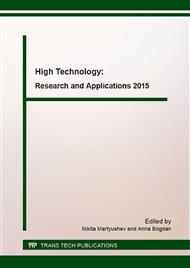p.370
p.375
p.380
p.385
p.389
p.394
p.399
p.403
p.408
Effect of Conjugated Heat Transfer Conditions on the Crystallization of the Composite Coating
Abstract:
This paper presents the thermophysical model of crystallization of the coating at the conditions of imperfect contact between the coating and sunstrate. The model takes into account the heat exchange of coating with the environment and with the substrate. The influence of thermal resistance of the interface and concentration of filler in the coating on the change of temperature during cooling is investigated.
Info:
Periodical:
Pages:
389-393
Citation:
Online since:
February 2016
Authors:
Price:
Сopyright:
© 2016 Trans Tech Publications Ltd. All Rights Reserved
Share:
Citation:


